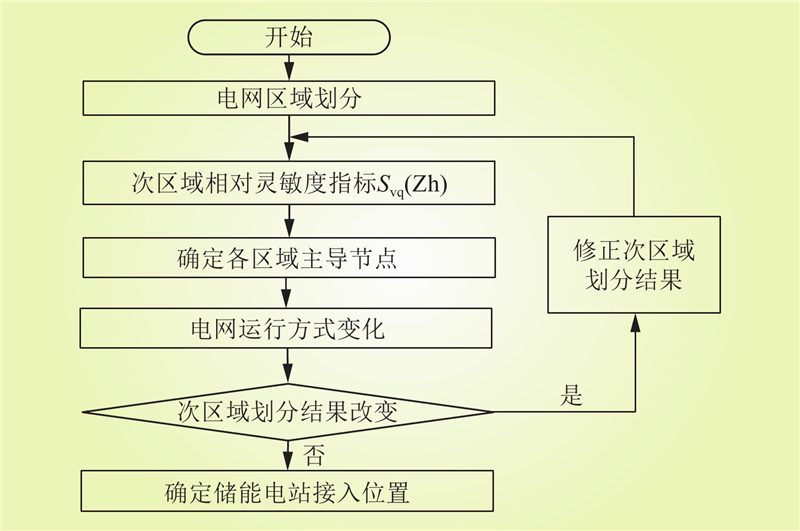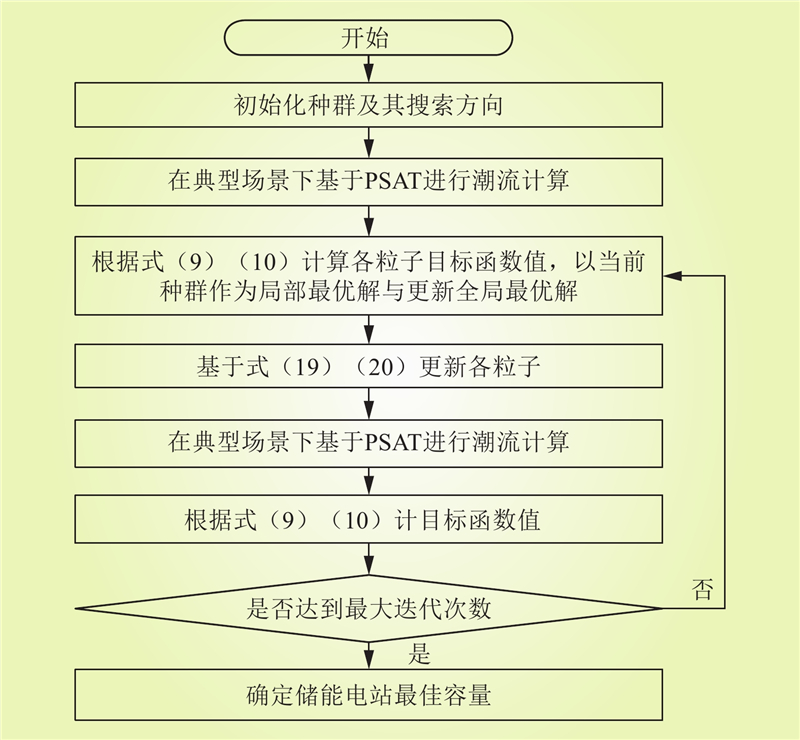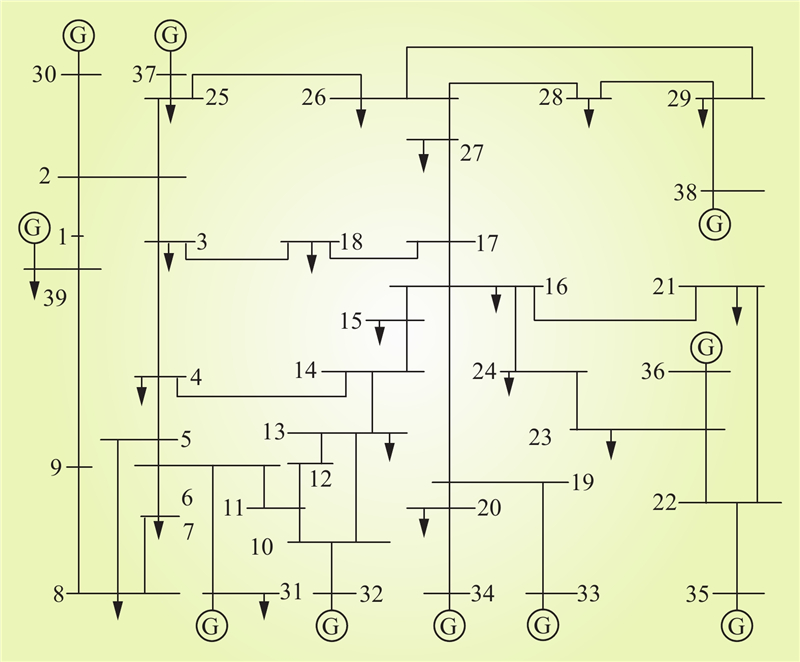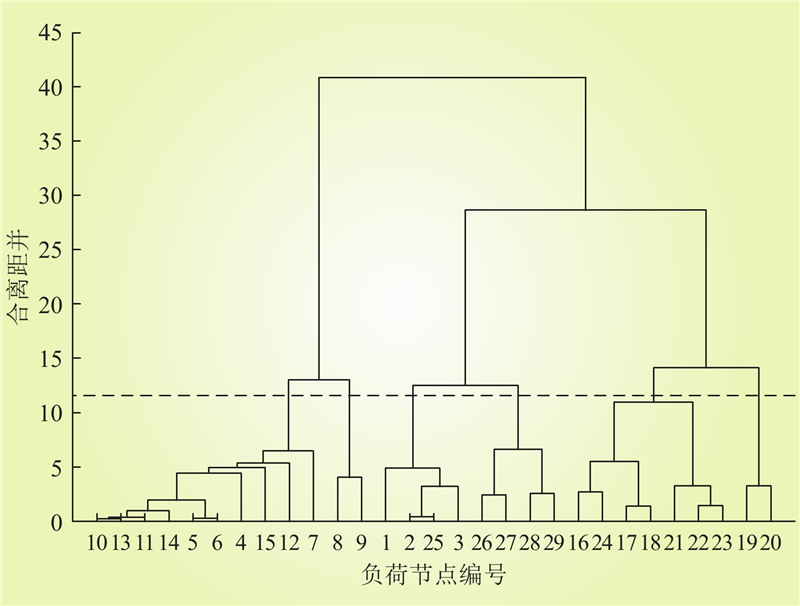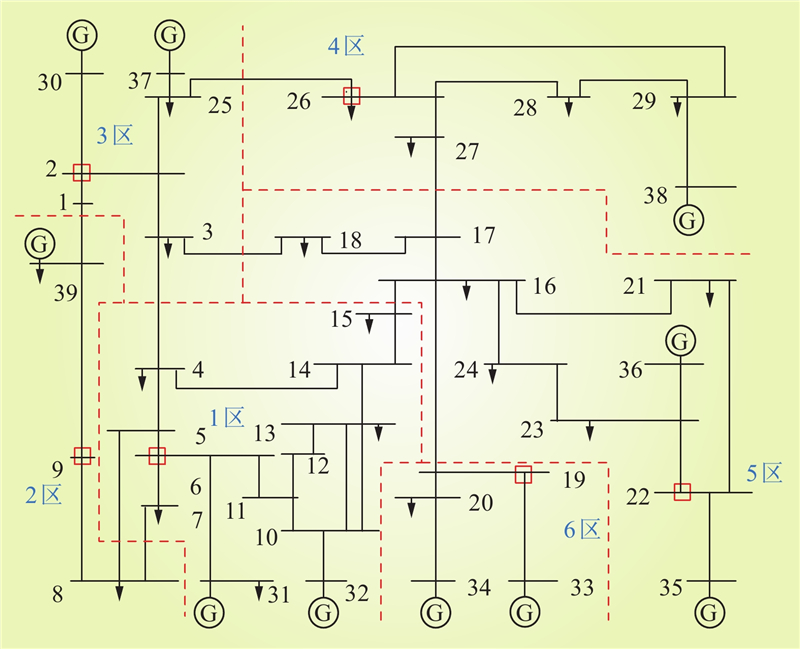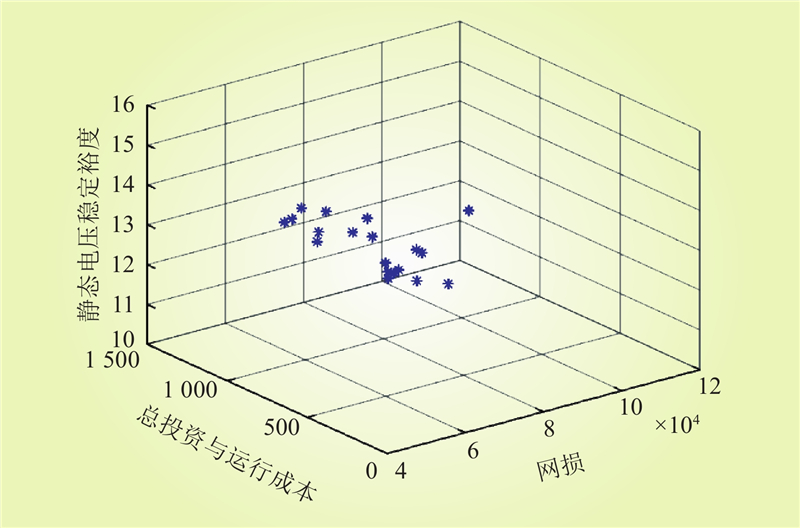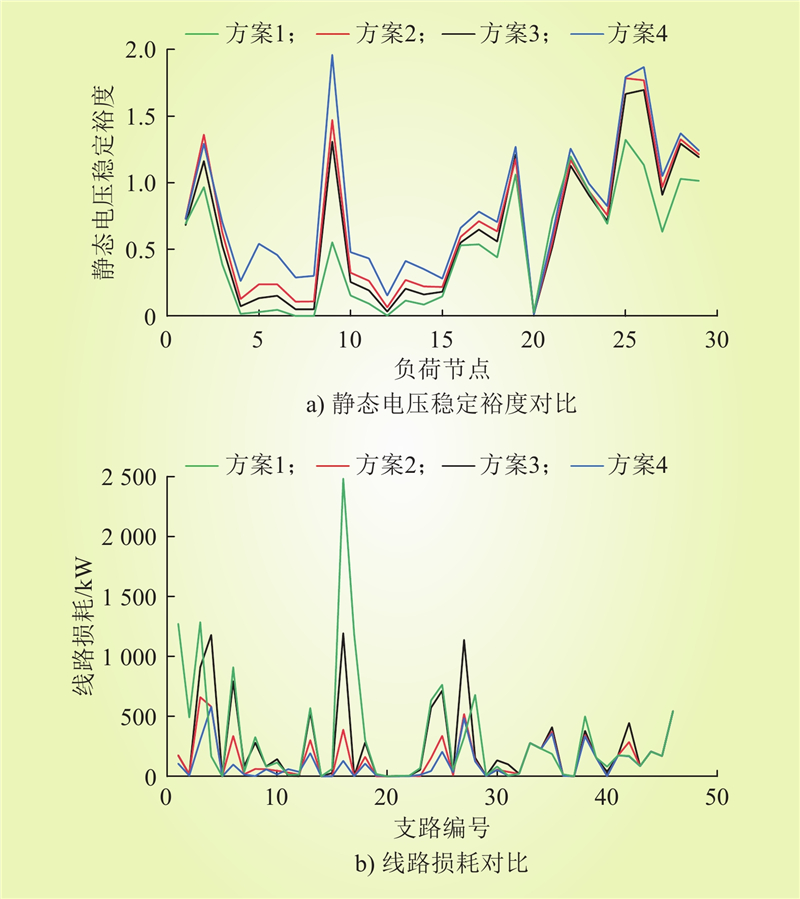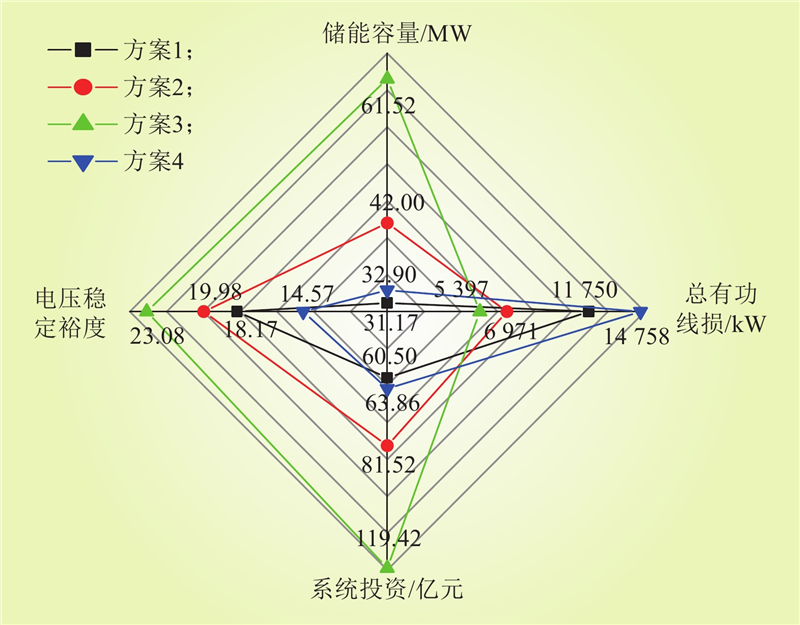| 1 |
国务院发展研究中心国际技术经济研究所. 世界前沿技术发展报告[M]. 电子工业出版社, 2021.
|
| 2 |
李建林, 李雅欣, 周喜超. 电网侧储能技术研究综述[J]. 电力建设, 2020, 41 (6): 77- 84.
|
|
LI Jianlin, LI Yaxin, ZHOU Xichao. Summary of research on grid-side energy storage technology[J]. Electric Power Construction, 2020, 41 (6): 77- 84.
|
| 3 |
陈涵, 徐玲铃, 杨柳, 等. 地区电网技术降损研究现状及展望[J/OL]. 电网技术, 1–13[2024-12-10].
|
|
CHEN Han, XU Lingling, YANG Liu, etal. Research status and prospects on technical loss reduction of regional power grid. Power System Technology, 1–13[2024-12-10].
|
| 4 |
汤广福, 罗湘, 魏晓光. 多端直流输电与直流电网技术[J]. 中国电机工程学报, 2013, 33 (10): 8- 17, 24.
|
|
TANG Guangfu, LUO Xiang, WEI Xiaoguang. Multi-terminal HVDC and DC-grid technology[J]. Proceedings of the CSEE, 2013, 33 (10): 8- 17, 24.
|
| 5 |
曹新慧, 车勇, 司政, 等. 广域储能电站定容-选址一体规划[J]. 中国电力, 2022, 55 (7): 110- 120.
|
|
CAO Xinhui, CHE Yong, SI Zheng, et al. Integrated planning of optimal sizing and siting of energy storage plants across wide area[J]. Electric Power, 2022, 55 (7): 110- 120.
|
| 6 |
张智, 周明, 武昭原, 等. 考虑动态频率支撑的储能选址定容规划方法[J]. 中国电机工程学报, 2023, 43 (7): 2708- 2721.
|
|
ZHANG Zhi, ZHOU Ming, WU Zhaoyuan, et al. Energy storage location and capacity planning method considering dynamic frequency support[J]. Proceedings of the CSEE, 2023, 43 (7): 2708- 2721.
|
| 7 |
高春雨, 王海云, 朱姝林. 基于电压稳定度的分布式储能选址定容规划[J]. 科学技术与工程, 2023, 23 (7): 2884- 2891.
|
|
GAO Chunyu, WANG Haiyun, ZHU Shulin. Optimal siting and sizing of distributed energy storage based on voltage stability[J]. Science Technology and Engineering, 2023, 23 (7): 2884- 2891.
|
| 8 |
TANG X B, DENG K, WU Q W, et al. Optimal location and capacity of the distributed energy storage system in a distribution network[J]. IEEE Access, 2020, 8, 15576- 15585.
DOI
|
| 9 |
KHALID M, SAVKIN A V. Optimization and control of a distributed battery energy storage system for wind power smoothing[C]//2011 19th Mediterranean Conference on Control & Automation (MED). Corfu, Greece. IEEE, 2011: 39–43.
|
| 10 |
徐吉智, 张新燕, 常喜强, 等. 基于PV曲线和改进遗传算法储能选址定容研究[J]. 太阳能学报, 2022, 43 (1): 263- 268.
|
|
XU Jizhi, ZHANG Xinyan, CHANG Xiqiang, et al. Research on energy storage location and capacity determination based on PV curve and improved genetic algorithm[J]. Acta Energiae Solaris Sinica, 2022, 43 (1): 263- 268.
|
| 11 |
王子琪. 含风光区域电网的储能选址定容及能量管理研究[D]. 北京: 华北电力大学, 2021.
|
|
WANG Ziqi. Research on the location and capacity of energy storage and erergy management of regional power grid with wind and solar energy[D]. Beijing: North China Electric Power University, 2022.
|
| 12 |
孙东磊, 赵龙, 孙凯祺, 等. 新能源接入下配电系统混合储能选址定容优化策略研究[J]. 太阳能学报, 2024, 45 (1): 423- 432.
|
|
SUN Donglei, ZHAO Long, SUN Kaiqi, et al. Research on optimization strategy of Hess site and capacity selection in distribution system with renewable energy access[J]. Acta Energiae Solaris Sinica, 2024, 45 (1): 423- 432.
|
| 13 |
丁倩. 考虑可再生能源不确定性的储能选址定容规划方法研究[D]. 杭州: 杭州电子科技大学, 2020.
|
|
DING Qian. A grid electrochemical energy storage siting and capacity planning considering renewable generation uncertainty[D]. Hangzhou: Hangzhou Dianzi University, 2020.
|
| 14 |
ZHAI L M, XIAO C Q, LI X H, et al. Research on location determination and capacity optimization method for large-scale energy storage station in regional power grid[M]//Lecture Notes in Electrical Engineering. Singapore: Springer Nature Singapore, 2024: 359–369.
|
| 15 |
YOU W B, DING Y H. W-MOPSO in adaptive circuits for blast wave measurements[J]. IEEE Sensors Journal, 2021, 21 (7): 9323- 9332.
DOI
|
| 16 |
黄蓉. 基于牛顿-拉夫逊法和P-Q分解法的配网潮流计算联合迭策略[J]. 自动化应用, 2023, (22): 55- 57.
|
|
HUANG Rong. Joint iteration strategy for distribution network power flow calculation based on Newton-raphson method and P-Q decomposition method[J]. Automation Application, 2023, (22): 55- 57.
|
| 17 |
CAPÓ M, PÉREZ A, LOZANO J A. An efficient split-merge re-start for the K-means algorithm[J]. IEEE Transactions on Knowledge and Data Engineering, 2020, 34 (4): 1618- 1627.
|
| 18 |
GHOSH A, CHUNG J, YIN D, et al. An efficient framework for clustered federated learning[J]. IEEE Transactions on Information Theory, 2022, 68 (12): 8076- 8091.
DOI
|
| 19 |
邓雅文, 侯鹏, 蒋卫国, 等. 基于多特征指标和层次聚类分析的河源区范围自动划分方法研究[J]. 地球信息科学学报, 2022, 24 (3): 469- 482.
|
|
DENG Yawen, HOU Peng, JIANG Weiguo, et al. Automatic extraction of river source region boundary based on multi-characteristic indexes and hierarchical cluster analysis[J]. Journal of Geo-Information Science, 2022, 24 (3): 469- 482.
|
| 20 |
李建林, 康靖悦, 崔宜琳. 储能电站优化选址定容研究综述[J]. 电气时代, 2022, (6): 34- 37.
|
| 21 |
KHODADADI N, ABUALIGAH L, MIRJALILI S. Multi-objective stochastic paint optimizer (MOSPO)[J]. Neural Computing and Applications, 2022, 34 (20): 18035- 18058.
DOI
|
| 22 |
刘君华. 电力系统无功源配置与分级电压控制的研究[D]. 杭州: 浙江大学, 2006.
|
|
LIU Junhua. Research on reactive power source configuration and graded voltage control in power systems[D]. Hangzhou: Zhejiang University, 2006.
|
| 23 |
武亦文. 提升电网可靠性的储能电站规划技术研究[D]. 北京: 北方工业大学, 2023.
|
|
WU Yiwen. Research on planning technology of energy storage power station to improve the reliability of power grid[D]. Beijing: North China University of Technology, 2023.
|
| 24 |
宋思锦. 含高比例新能源的配电网储能规划研究[D]. 济南: 山东大学, 2023.
|
|
SONG Sijin. Research on distribution network energy storage planning with high proportion of new energy[D]. Jinan: Shandong University, 2023.
|
| 25 |
杨子昊, 娄柯, 蒋卓伟. 考虑需求响应的微电网优化调度[J]. 昆明理工大学学报(自然科学版), 2023, 48 (4): 74- 86.
|
|
YANG Zihao, LOU Ke, JIANG Zhuowei. Optimal Scheduling of Microgrid Considering Demand Response[J]. Journal of Kunming University of Science and Technology(Natural Science), 2023, 48 (4): 74- 86.
|
| 26 |
刘子祺, 苏婷婷, 何佳阳, 等. 基于多目标粒子群算法的配电网储能优化配置研究[J]. 综合智慧能源, 2023, 45 (6): 9- 16.
|
|
LIU Ziqi, SU Tingting, HE Jiayang, et al. Research on the optimal allocation of energy storage in distribution network based on multi-objective particle swarm optimization algorithm[J]. Huadian Technology, 2023, 45 (6): 9- 16.
|
| 27 |
方彤, 蒋东方, 杨洋, 等. 基于NSGA-Ⅱ和熵权法的氢综合能源系统商业运营模式[J]. 中国电力, 2022, 55 (1): 110- 118.
|
|
FANG Tong, JIANG Dongfang, YANG Yang, et al. Research on business operation mode of hydrogen integrated energy system based on NSGA-II and entropy weight method[J]. Electric Power, 2022, 55 (1): 110- 118.
|
| 28 |
LIU J W, LI Q, CHEN W R, et al. Remaining useful life prediction of PEMFC based on long short-term memory recurrent neural networks[J]. International Journal of Hydrogen Energy, 2019, 44 (11): 5470- 5480.
|
| 29 |
PENG Y L, CHEN T, XIAO F, et al. Remaining useful lifetime prediction methods of proton exchange membrane fuel cell based on convolutional neural network-long short-term memory and convolutional neural network-bidirectional long short-term memory[J]. Fuel Cells, 2023, 23 (1): 75- 87.
|
| 30 |
WANG F K, MAMO T, CHENG X B. Bi-directional long short-term memory recurrent neural network with attention for stack voltage degradation from proton exchange membrane fuel cells[J]. Journal of Power Sources, 2020, 461, 228170.
|


